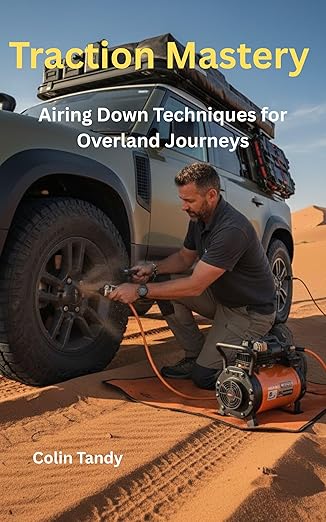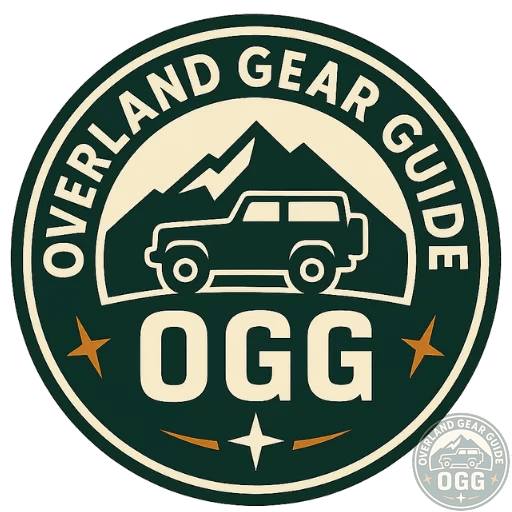Understanding Traction & Why Airing Down Matters

Traction isn’t magic — it’s how your tyres share load with the ground. Get the plain-English version of what changes when you drop pressure, where it helps, and the limits you should respect.
What “traction” really is (and why pressure matters)
Traction is your tyre’s ability to transmit forces — accelerating, braking, and turning — into the ground. Three things dominate: the contact patch (how much rubber actually touches), the surface (sand, rock, mud, snow), and the tyre’s construction (tread, compound, sidewall).
Contact patch: from long-narrow to wide-pancake
At highway pressure your footprint is long and narrow for stability and efficiency. Lowering pressure flattens it into a shorter, wider “pancake” that improves flotation and grip on loose surfaces. Expect softer steering response and more heat at speed — which is why we reinflate before pavement.
Sidewall flex: the good, the bad, the limits
- Good: wraps around obstacles to maintain grip; smooths corrugations.
- Trade-off: steering gets slower and vague on firm ground.
- Risk: very low PSI can cause rim strikes or bead unseating — especially on heavy rigs or sharp rock.
Where airing down helps most
Soft sand & deep snow
Lower pressures increase flotation so you ride on the surface, not in it. Use steady momentum; avoid sharp steering that digs a shoulder.
Rocks & rutted trails
Moderate reductions let tread and sidewall conform to uneven rock for more contact. Keep speeds low; protect wheels and watch for pinch points.
Know the trade-offs (so you don’t pay later)
| Benefit | Trade-off | What to do |
|---|---|---|
| Flotation & grip on soft ground | Vague steering on firm surfaces | Slow down; reinflate for road speed |
| Conformity over rocks | Rim strikes / bead risk when very low | Stay conservative; consider beadlocks for extreme use |
| Smoother ride on corrugations | Heat build-up & higher rolling resistance | Limit speed and distance; reinflate early |
Quick field checklist
- Drop pressure in small steps (2–5 PSI), test drive, repeat as needed.
- Heavier rigs and towing? Stay toward the higher end of any range.
- Below ~12 PSI without beadlocks increases de-bead risk — go slow and avoid sharp turns.
- Reinflate before pavement or higher-speed hardpack.
- Carry: quality gauge, fast inflator, valve core tool, plug kit, traction boards.
Air-Management Essentials
The right tools make pressure changes fast, accurate, and safe.
EZ FLATE M.O.A.B. Auto Air Compressor (10.6 CFM, 150 PSI)

- AUTO AIR MODE: LCD lets you set a target PSI, shows live pressure, and auto-shuts off when reached.
- Speed & power: Dual-cylinder 10.6 CFM / 300 LPM for fast inflation on large overland tyres.
- Built for duty: Ideal for heavy jobs — perfect for Overlanders & Crawlers.
- Includes: Compressor, heavy-duty storage bag, 26 ft rubber hose w/ screw-on tip, 5 ft lead hose, pressure gauge, 3 nozzle adapters.
JACO ElitePro-X Tire Pressure Gauge (100 PSI) w/ Lightning Chuck

- High accuracy: Calibrated to ANSI B40.1 (±1.5%) up to 100 PSI — no batteries required.
- Lightning Chuck: Patented push-to-lock nozzle instantly seals to the valve — hands stay clear.
- Quick-release: Detach with zero air loss at the press of a button.
- Durable build: Aircraft-grade aluminium body + 8" nylon-braided hose & fast bleeder valve.
- Lifetime Warranty from JACO; includes padded storage pouch.
Disclosure: Some links are affiliate links. If you buy through them, we may earn a small commission at no extra cost to you.
📗 Traction Mastery: Airing Down Techniques for Overland Journeys

Unlock Your 4×4’s True Potential. The Most Powerful Upgrade Costs Nothing.
You have the rig and the route — now master the art of airing down. Go beyond guesswork with evidence-based techniques for sand, mud, rock, and snow.
- The science made simple: contact patch, flotation, mechanical grip.
- Terrain-specific blueprints with starting pressures and technique.
- The essential toolkit and step-by-step field procedures.
- How to avoid de-beads, rim damage, and sidewall failures.
Authored by overlanding expert Colin Tandy. Perfect for first-time explorers and seasoned travelers alike.


.png)